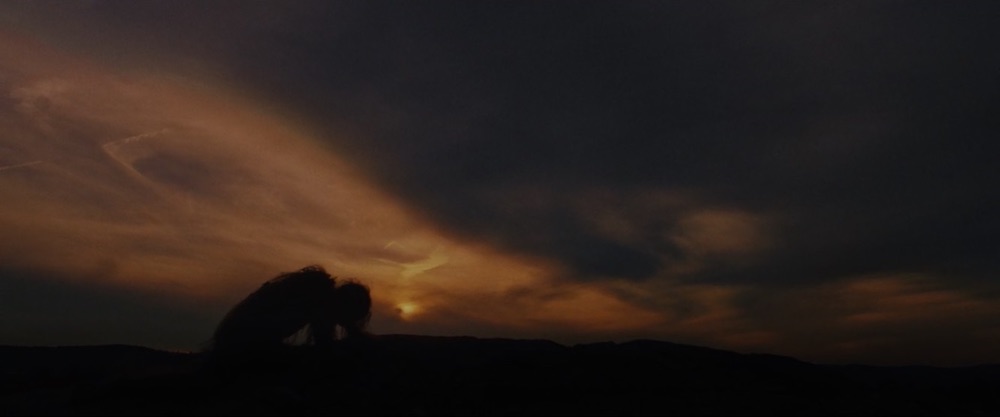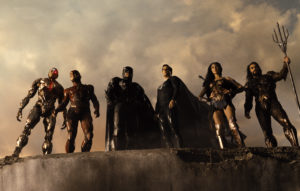
Let me tell you about this new movie I just saw. It’s an evocative, complex character portrait of an old man haunted by his past. It’s a film that engages in complicated questions of what war can and does accomplish, what the “right thing” is in a violent situation, and the deep psychological impact doing this “right thing” can have on the people who did it. It’s structured with a wonderfully edited throughline of flashbacks and remembrances, using the past to deepen and expand upon the present we see, never used for cheap “twists” but instead to build character and help explain why people act the way they do. There’s a heartfelt and heartbreaking romance, beautifully shot vistas, and sharp dialogue delivered by the legendary Sam Elliott in one of his most impressive performances. And the film is called The Man Who Killed Hitler and Then the Bigfoot.
That title, I fear, will be a sad sticking point in this film’s popularity and reach. It reads ironic and humorous; it reads like Hobo With a Shotgun, Snakes on a Plane, or Sharknado. I’ll be honest: I expected to be writing an excoriating essay on how these ironic neo-grindhouse films are lazy, unfunny, and a disgrace to what made exploitation film actually interesting, the ways they hedge their bets and never actually go for it. Instead, I got a quiet, contemplative, and melancholic film in which the word “Bigfoot” isn’t said until over 45 minutes in. The people drawn in by that title will leave disappointed (the section with Bigfoot lasts maybe 20 minutes, total, including extensive flashbacks), and the people who might appreciate this film for what it is–an evocative, haunting depiction of remorse and aging–ll be immediately turned off by it as well. I suppose from a marketing perspective, it makes sense, but it’s one of the few visible flaws the movie has, and it’s the first thing anyone will hear about it.
Sam Elliott plays the old version of Calvin Barr, a man living in small-town America, ruminating on his past so much that he seems perpetually stuck in it. That past (where he is portrayed by Aidan Turner), includes, of course, the titular assassination of Adolf Hitler, but equally emphasizes the woman he loved and left behind when he went off to war, and the ways that what he wanted and expected from his military service turned out every way he never wished. One night, the elder Calvin Barr is approached by members of the United States and Canadian governments, requesting his help in tracking and killing the Bigfoot, who is spreading an infection that kills so fast it looks more like a murder. Calvin is one of the only known people with an immunity to this infection, and the only person the government has on file with the skill and ability to stop this infection from spreading across the rest of the world.
It’s in the details of this plot that we can begin to see the way this film has its own, unique goals, and how it diverges from the schlocky B-movie its title might set it up as. For starters, that infection subplot–it’s a rather odd one, not based in Bigfoot mythos of general readings of the creature. But when given context, it makes real sense: at one point, when speaking to the government officials who are prodding him over the truth of his assassination of Hitler, he divulges with regret and anger that yes, that was him, that yes, he did that, and no, it didn’t make one lick of difference. The true evil had spread beyond the man, and the idea outlived him–fascism didn’t magically stop when its source was killed. The concentration camp prisoners, who we see being led from a train car with the disturbing casualness of bureaucracy, were not suddenly freed by his act of heroism. At the moment we see his younger self kill the leader of the Third Reich, his hand is shaking, he seems almost distraught–a murder, even a necessary one, scars your soul.
This complexity of character, this depth of motivation and regret–these are what make this film something special. Calvin’s relationship with his brother (played by Larry Miller) feels lived-in and real, two men who love each other but don’t communicate, one trying hard to break through a line of defense and the other constantly erecting more ways to stay isolated. In flashbacks, we see young Calvin’s girlfriend Maxine (portrayed by Caitlin FitzGerald) refuse to drive him to the station on the day he departs for the war, instead telling him she will keep walking when they get to his house, and the next time she sees him it will be as if he’d only stopped to tie his shoe. This moment, sentimental in every way, works precisely because of the weight and sense of inevitability the rest of the film has developed, and what we know will happen after that moment. In its small-town sadness, nostalgia, and beautiful cinematography, the movie I was reminded most of, perhaps oddly, was A River Runs Through It. That is, also, a movie often filled with sentiment, but its delicate depiction of its characters and their histories stops it from moving into the realm of “corny.” It is sincere, and in its manufactured film language way, real.
If The Man Who Killed Hitler and Then the Bigfoot has a misstep beyond its audience-baiting title, it is in its handling of the segment involving Bigfoot. It is not bad, precisely, but its pacing feels far too quick, like director Robert D. Krzykowski was in a rush to move through the B-movie segment and get back to his thoughtful character piece. To a degree, this makes sense–the very rare action scenes are the film’s weakest elements and are often quite disposable. What could’ve sold it, however, was a longer immersion into the forest, more time spent tracking, more time spent hunting, giving it the introspective air the rest of the film lands with aplomb. At only 98 minutes, another 10 spent on this very important plot point would not be unwelcome.
However, said second act doesn’t stop the film from being a fulfilling and intriguing piece of filmmaking. Instead of giving us a half-assed ironic take on the material, Krzykowski and crew made a thoughtful, meditative piece of work that deserves genuine consideration and not the knee-jerk derision its title will probably doom it to. It’s worth rewarding when a film with a premise so high-concept has the focus and dedication to follow through with something that is far more than its elevator pitch. The Man Who Killed Hitler and Then the Bigfoot is, despite all odds, a moving, elegiac, and intelligent movie about loss and violence that just so happens to feature a fistfight with a cryptid. As far as metaphors go, there are far worse ones you could use.
—
The Man Who Killed Hitler and Then the Bigfoot is premiering at the 2018 Fantasia International Film Festival.
Directed by Robert D. Krzykowski; written by Robert D. Krzykowski; starring Sam Elliott, Aidan Turner, Caitlin FitzGerald, and Larry Miller; 98 minutes.



 Derek
Derek
 Isabelle
Isabelle